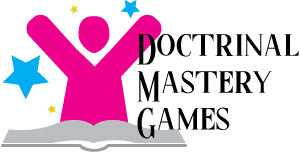
Ken Alford
This information was originally published at http://kenalford.com/semlist/2002/02jan25.htm and sent out as part of Ken Alford’s email list to Seminary teachers.
In the next several [Seminary-Notes] messages, we’ll consider some ideas for “non-game” scripture mastery activity days that you might wish to try. The first idea is to hold two “scripture mastery scripture chain” activity days.
Scripture Mastery Scripture Chain Activity Day (Day 1)
============================================Assign small student teams to create scripture chains that follow the doctrines and principles of scripture mastery keywords throughout the four Standard Works. I recommend that each scripture chain should begin with one of the scripture mastery scriptures.
The “Topical Guide” in the back of the Bible is an excellent resource for creating scripture chains.
It helps students if you take a scripture mastery keyword, such as “Faith,” turn to the Topical Guide, and show them how to look for connections between scriptures (rather than simply chaining all of the scriptures in the Topical Guide together in order, as some students will attempt to do).
Scripture Mastery Scripture Chain Activity Day (Day 2)
============================================Have the student teams, from the Day 1 activity, share their scripture chains with the entire class — explaining why they selected the scriptures they did and placed them in the order they did. Students can then add the new scripture chains to their scriptures.
It’s often helpful to have students select a blank page in their scriptures, write “Scripture Chains” on the top, and then use it to keep track of all of the scripture chains they’ve added to their scriptures.
Students can write the Gospel doctrine/principle/topic or scripture mastery keywords and the starting scripture for each scripture chain on their “Scripture Chains” page, for example:
Faith. Alma 32:21
Next to each scripture in the scripture chain, students can add the reference to the next scripture in the chain. (I like to use the mathematical symbol for “infinity” to show that one scripture has been chained to another.
Some individuals like to chain the last scripture back to the first scripture in the chain, but I prefer to leave the end of the chain open so that additional scriptures may be added in the future.
Best wishes,
Ken Alford
TIP – Consider having students make a scripture chain using the Basic Doctrines. ~Jenny
Kenneth L. Alford
Title: Associate Professor
Office: 316D JSB
Bio: Dr. Kenneth L. Alford is an Associate Professor of Church History and Doctrine. After serving almost 30 years on active duty in the United States Army, he retired as a Colonel in 2008. While on active military duty, Ken served in numerous assignments, including the Pentagon, eight years teaching computer science and information systems engineering at the United States Military Academy at West Point, and four years as a Professor of Behavioral Science and Department Chair at the National Defense University in Washington, DC. After serving in the England Bristol Mission, he earned a Bachelor of Arts degree in Political Science from Brigham Young University, a Master of Arts in International Relations from the University of Southern California, a Master of Computer Science from the University of Illinois at Urbana-Champaign, and a Ph.D. in computer science from George Mason University. He has published and presented on a wide variety of subjects during his career. His current research focuses on Latter-day Saint military service. Ken and his wife, Sherilee, have four children and thirteen grandchildren.



